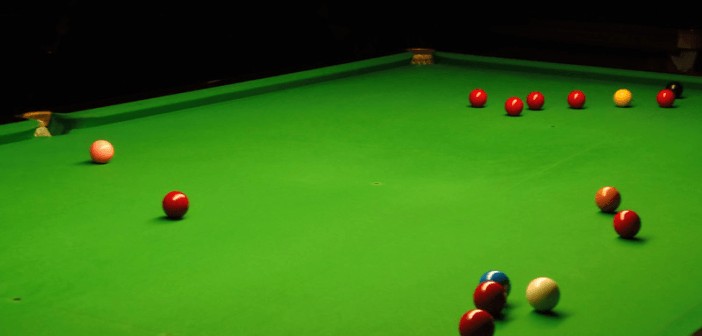Looking to improve your snooker strategy? Want to be a better match player?
There are several ways to improve your game.
Most of us to choose to practice the obvious: potting balls, building breaks and potting more balls.
Demolishing a line-up is all good and well – it certainly won’t hurt your game! – but the practice table is a kiddy’s playground compared to the match table.
If you want to climb through the ranks, you have to be able to hang with the big boys. And we have a term for them: match players.
What the hell is a match player?
A match player is the type of snooker strategist who will tie you up in knots. He’s a nuisance, a pest. The type of opponent who takes your pre-game expectations of playing well and squashes them in to a ball of head scratching safety, pressurised miscues and long range jabs off the baulk cushion.
Annoyingly, he also has bottle.
His eyes narrow as the scoreboard gets closer.
He seems to find a second wind in the very moments where you feel weakest.
Just when you think you’ve got your hand on the table, a victory in sight, he’ll raise his game and pip you on the colours. If he needs to pot an awkward final black, you know – you just know – it’s going right in the heart of the pocket.
Match players are tough as old boots. And if you want to beat one, you have only two options:
- Pot a lot of balls and keep him away from the table
- Improve your snooker strategy to fight fire with fire
In this post we’re going to look at some examples of legendary match players, as well as some tips for improving your overall snooker strategy.
Contents
Examples of Great Snooker Strategists
There have been some legendary match players over the years.
These days, emphasis at the highest level of the professional game is on break building, racking up centuries and winning frames in one visit. We marvel at the genius of Ronnie, the precision of Ding, the free-flowing “naughty snooker” of Trump, and so on.
But in clubs across the world — snooker is, was, and always will be a dog fight.
The better match player will usually prevail.
Whatever your standard of play, you will improve by studying the great snooker strategists.
So who are the Kings of Match Play?
John Higgins
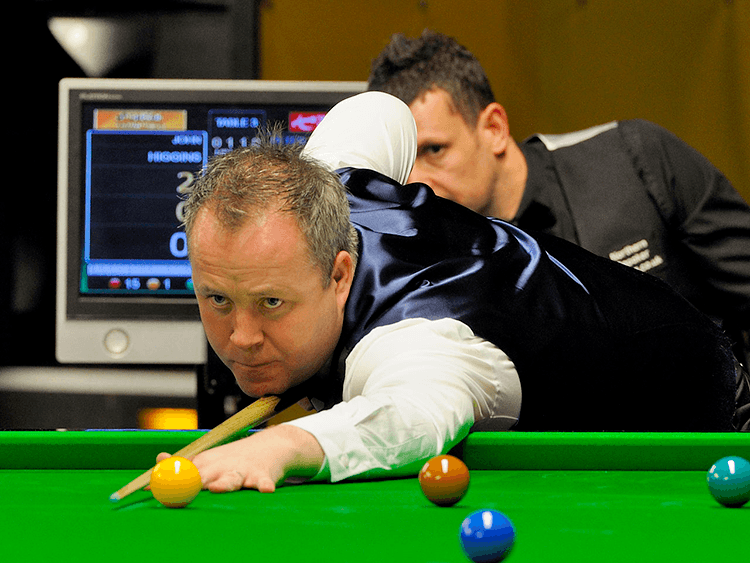
Arguably the greatest snooker match player of all time, the words “tough to beat” are typically followed by an audible sigh from just about every opponent John Higgins has ever been drawn against.
He is, quite simply… granite.
Most professionals think a few shots ahead, but Higgins sees the table in a different dimension.
His ability to play the percentages, to wait for his chance, and then to take it when it comes is the stuff of snooker legend.
If a praying mantis could hold a snooker cue…
Higgins has four world titles to his name, but the biggest testament to his stickability is the three successive finals he never won — in 2017, 2018 and 2019. Despite several battles with form, and nearly thirty years of hard yards around the baize…he was still there at the end, scaring the living daylights out of his fellow finalists.
Ray Reardon
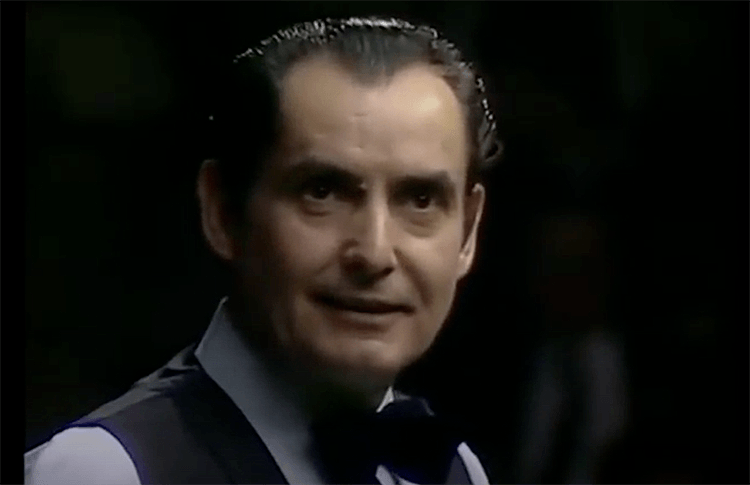
Six-time world champion Ray Reardon wasn’t the heaviest scorer. 53 century breaks in a professional career spanning 25 years seems like a low return for a player widely considered the first ‘dominant force’ of the modern era.
But Dracula’s dominance around the table struck fear in to his rivals.
His tactical play and positional awareness made getting a foothold in the frame akin to squeezing around the side of Jose Mourinho’s bus.
“He’d slowly strangle them to death like a boa constrictor.”
– Steve Davis
Ray was known for his clutch clearances under pressure, and a formidable ability to keep his boot placed firmly over the opponent’s throat.
In later years he has been credited with helping a number of top professionals improve their tactical play, including the Rocket himself.
Mark Selby
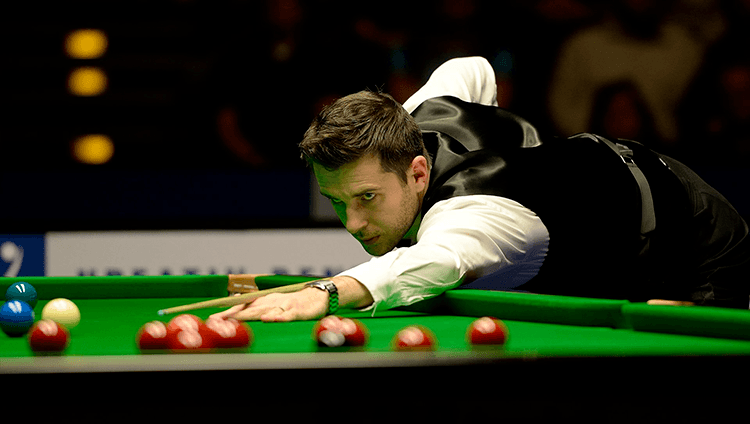
Dubbed “The Torturer” in Ronnie O’Sullivan’s autobiography, three-time world champion Mark Selby is known for his ability to thrive in the snooker equivalent of trench warfare.
The ultimate modern day spoiler, his tactical knowledge is second-to-none.
This is a man who famously took as long to play a single shot as Ronnie did to compile his world record 147:
If you had to choose one player to lay an inch perfect snooker to swing a frame on its head, Sat Nav Selby would be top of the list.
Selby’s knowledge of the angles combined with his tenacity, ice cold temperament and refusal to give up easy chances makes him a nightmare to play against.
You don’t win three world titles without a well rounded game, but it’s Mark’s ability to reduce opponents to rubble that makes him such a feared competitor on the tour.
How To Improve Your Match Play
The three men above have a combined 13 World Titles attributed to their ridiculously high Snooker IQs.
In short: there’s a lot you can learn by studying how they play.
- What are the best ways to improve match play?
- What are the best actionable steps you can take to improve your overall snooker strategy?
Here are some of the key building blocks that will make a big difference to your results:
Play The Percentages
Shot selection.
The essence of great match play snooker boils down to shot selection, in learning how to play the percentages rather than simply throwing your cue at a tempting pot.
A classic example is a black ball frame.
The scores are tied, whoever sinks the black takes the spoils.
Your opponent has left you a tough dead-weight pot along the rails.
In practice you’d expect to pot maybe 3/10 of them.
But if you miss, you’ll surely leave it for your opponent.
There’s a safety available which you have a 60-70% chance of executing well.
Which shot do you play?
A poker player would take one look at the predicted outcomes and see the obvious: A 60-70% chance of a good outcome by playing safe is a much better deal than the 70% chance of missing the pot and losing the frame.
But it’s one thing to calculate the percentages — it’s another thing to play them.
Many club players lose their heads at this point and take on the pot, which will appear beautifully disguised as the finishing line.
They will commiserate over a pint of bitter with the knowledge that “at least I had a crack at it.”
Well, sure.
But wouldn’t you rather have won the frame?
Playing the percentages is about learning to control your emotions; to choose the shot that has the highest chance of a positive outcome.
This is difficult. Fiendishly difficult.
First you need to understand the options that are available to you – what shots could you play? Then you need to calculate both your likelihood of executing them well, and your opponent’s likelihood of responding to them effectively. All of these variables change dynamically based on the opponent, each player’s form, the match situation, and so on.
The strong match player will typically lie in wait until the exact moment that the percentages swing in his favour.
The ‘risk assessment’ approach is available to all players.
It’s a skill that gets better every time you use it, whereby every outcome acts a case study for calculating future percentages.
Whether you choose to use it is a personal choice.
But those who do quickly get a reputation around leagues and club halls:
- “tough”
- “hard to beat”
- “knows what he’s doing”
- “…good match player”
Set Traps
The art of giving your opponent problems to solve.
Have you ever come away from a royal hiding where you just couldn’t get your hand on the table, where the balls were always awkward, where you didn’t really trust that you had the shots available to take advantage of the scarce chances that came your way?
Sure, you might have accidentally crapped on Lady Luck’s cornflakes.
But this is also how it feels to compete against an experienced match player at his disciplined best.
If you’re looking for a tell tale sign that you’re up against one, ask yourself: “Where does he go to stand before he plays a safety?”
If the answer is right where I don’t want to be playing my next shot from, then that’s a pretty good sign that your short term happiness is about to become his main course for the evening.
In absence of an obvious opportunity to score, a good match player will always scout out the safety that gives you the biggest problem to solve.
Crucially, it might not always look textbook. A good safety doesn’t always mean cue ball returned safely to baulk.
It might not even look like a safety.
If the opponent has weighed up that your penchant for taking on thin cuts to the middle doesn’t line up with your ability to pot the bloody things, then he might well choose to leave you one. A tempter. A trap.
Often the problem that needs solving is the battle in your head.
A good match player knows this and will serve up more chaos.
- If he reads you as a fast player who wants a nice open frame to get home in time for supper, then that’s precisely what he won’t provide.
- If he knows that you’re excellent around the black spot, he’ll dial down his own shot choice so as not to gift you easy starters.
- If he knows that you can’t resist a pop at a long red, he’ll leave you one that’s just beyond your comfort level.
To get better at this form of match play, you first have to tune in to your opponent.
The conventional wisdom says “play the table, not the man.”
Well, you can make that table much more attractive to play on if the other bloke has been mentally razed to the baize.
Study your opponent’s weaknesses – mental and technical.
You still want to play to your own strengths where possible, but there will be key moments in the frame where your opponent’s weakness is integral to playing the percentages correctly.
Work out what they are and exploit them.
Play The Scoreboard
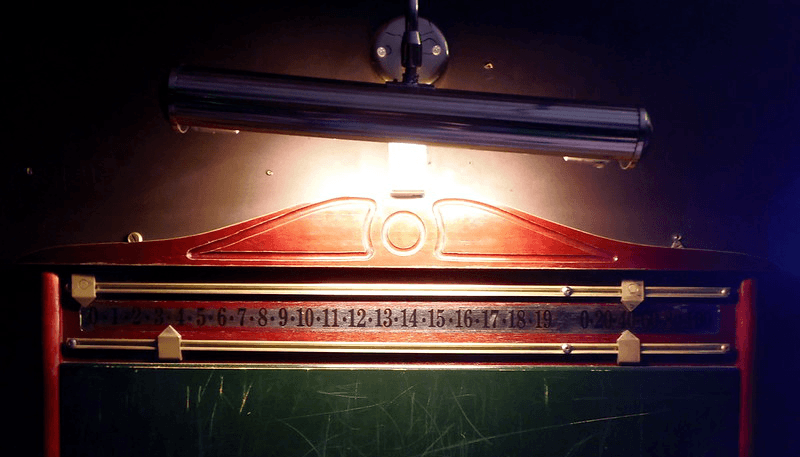
Image Creative Commons courtesy of David_pics
“Hey John, did you put my one up?”
The closest most of us get to thinking about the score is a simple diagnosis:
- Am I ahead?
- Am I behind?
- How many snookers do I need?
- Is it time to sack this off and head to the bar?
Against a proper match player you will find that his game evolves in symmetry with the scoreboard.
His shot choice is defined by how many risks he needs to take, and what balls he needs available to seal a win.
If he gets 30 points ahead with one red, a very open table, and all the colours on their spots, he will instinctively look to put a ball safe. Usually the yellow or green.
He doesn’t need to pot all the balls to win, so he takes out an insurance policy.
By making the table harder to clear in one visit, he massively increases his chances of winning.
In contrast, many players will be familiar with the handicap system in operation throughout snooker leagues. If a competent match player comes up against a very good player and receives a ‘start’ of 30 or 40 points, he will aim to make the table a nightmare. He’ll knock the pink and black safe, tie up reds, and do whatever he can to make it a low scoring frame where his handicap grows relative to the points on offer.
Playing the scoreboard in this way is a formidable advantage.
What often happens in clubs is that the player who is ahead will start to loosen his game. He grows in confidence and takes on more and more shots. He gets that itch to continue potting balls when the scoreboard doesn’t require it.
The buzz from this is enormous when it pays off.
But it’s not good match play.
The best match players will assess the scoreboard. If they have a sizeable advantage, they will apply the squeeze. They will force the final mistake that gets them over the line. They won’t chase it in a hurry.
Another example is when your opponent requires snookers.
At this point, you know that you’re only one pot away from the concession. You can smell the victory.
What do most players do?
They’ll take on literally any pot that might seal the deal. Pots they’d never dream of attempting if the scores were tied.
And it’s often a terrible mistake.
If you miss, you are much more likely to gift your opponent a chance to snooker you.
Strong match players know that the best way to play against somebody trying to snooker you is to try and snooker them back. Force that final mistake. Don’t go for the glory punt.
They are the worst frames to lose.
Expand Your Defensive Toolkit
It goes without saying, the best match players have a wider vocabulary when it comes to safety.
If you watch somebody like Selby play, it’s mind boggling how he is able to pick out a safety from a bad position.
Like pinning jelly to a wall.
In contrast, most club players come armed with a limiting defensive game. It consists of being able to pick out the most basic of snooker opportunities, and to send the cue ball back to baulk with relative consistency.
Those are good skills to have, but an entire textbook could be dedicated to the art of good safety.
Two of the most underused safeties:
The dump shot — If you can’t find a way to get the cue ball back to baulk, Cliff Thorburn’s ‘dump shot’ is a must-have in your defensive toolkit. Here you aim to leave the cue ball tight on the black cushion and get the object ball safe.
The awkward cue ball — If you are stuck amongst the balls and have no choice but to leave reds on, you can make life as hard as possible for your opponent by getting the cue ball tucked up tight on the nearest accessible cushion. Nothing fancy: just make the cueing nasty. It’s a percentage shot with a huge upside at club level.
Many players shy away from awkward safety exchanges by complicating the issue.
They look for a perfect safety that leaves nothing on.
In some frames, on some tables, these escapes simply aren’t available. You have to fall back on containing safety.
You accept that you will leave your opponent with a chance, and focus instead on increasing the difficulty of that chance.
Getting an awkward cue ball is the best way to do this, but another great alternative is to leave the ball that offers the worst positioning.
If there is a red over a pocket, instead of covering it, you might choose to leave it as the trap for your opponent. Force his hand. Reds over pockets are notoriously difficult to judge position from, and they will often end – infuriatingly – in breaks of “1 scored”.
There is boundless room for creativity and match play Machiavellianism when it comes to safety.
The best thing you can do is ask yourself simply: “What does my opponent want to play the least?”
Find Your Bottle
Last but not least… the magic elixir for all of the best match players.
One of the great compliments any cue sports enthusiast can receive is: “He’s got bottle.”
What is bottle?
It’s the ability to execute ruthlessly when the time comes.
To the outsider… it’s ice cold veins under pressure.
Snooker is a psychological battle and there is nothing more intimidating than the knowledge that an opponent will punish your mistakes in the End Game.
A clutch clearance, a 50/50 final black, a well judged safety on a table fraught with danger.
Bottle is your ability to do what needs to be done when the stakes are highest.
Unfortunately, there is no way of teaching it.
But it can be learned through experience, practice and… more practice.
One of the mysterious benefits of match play snooker is the re-enforcing effect it has — both on your opponent, and your own game.
By toughening up the loose edges of your strategy, you will create uncertainty for your opponent. You’ll leave fewer chances and find yourself in better positions on the table. But you’ll also add a degree of conviction and confidence to your own shot choices.
When you are meticulous in your approach to the game, you will become — over time — meticulous in your approach to those crucial shots.
It becomes an identity; a characteristic.
To the outsider… it’s bottle.
The holy grail.
We’ll be looking at some of the ways bottle can be ‘learned’ in the next post.
Who are your favourite match players in the world today? Are there any traits (or snooker strategy) we’ve missed?
Share your thoughts in the comments!
Featured image Creative Commons courtesy of David_pics.

